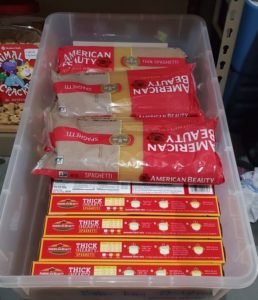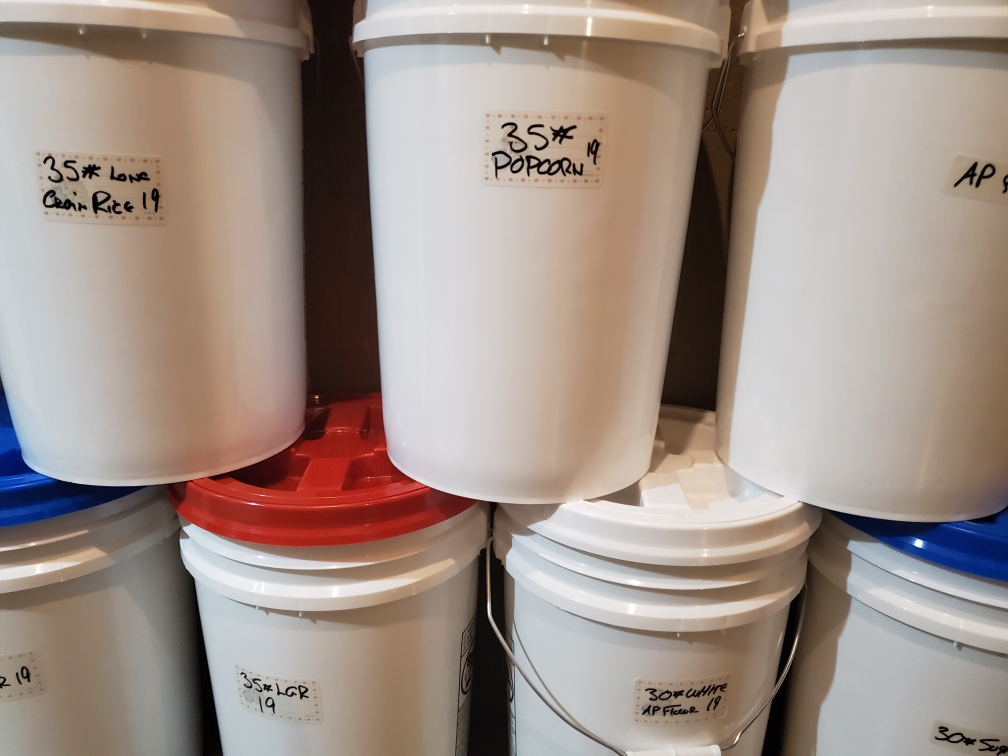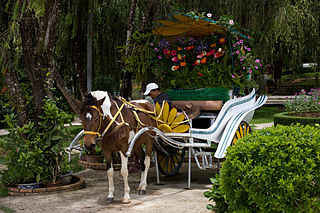You might have seen the signs in your local grocery store recently, hanging above an empty shelf. The ones at Kroger’s begin “Due to a poor harvest season…”. Walmart’s version was more vague: “Due to limited availability…” The one near me hoped the limited availability would be over August 9th. It was still hanging on the 17th.
It’s not just canned goods, though. Others have noted sugar and salt and dried pastas being in low supply. The proposed reasons are many and I have no theory as to which (if any) is correct. I just take them as an illustration that even the most efficient food distribution systems do not always deliver as promised. Even in good times.
But when market disruptions, trade wars, or natural or monetary disasters occur, you’re going to want to have food on hand. How much food? A lot of food. How much is a lot of food? A year’s worth of food for everyone in your household is a lot of food.
When relatives show up, when ration coupons come out, or when a crazy blue President with a pen and a phone hamstrings meat production because cows fart greenhouse gases, you’re going to find that a lot of food on hand is exactly what you want.

Few of us have enough money lying about to purchase a mountain of freeze-dried meals in #10 cans. Which is fine, because for a lot of reasons that’s the worst possible solution to the problem of having no food*.
A much better way is to consistently and patiently work toward stocking that much, in a way that won’t bust your budget even as it fills your pantry alongside your stomach.
Step 1: Figure out what you eat
Most home-cooking households eat a pretty predictable cycle of meals, often between 6 and 10 different dinners, and far fewer different breakfasts or lunches a month. And what they eat is not usually what comes in mountains of cans.
Rather than making a meal plan based on what you can prep (the mountain of cans solution), it’s far better to prep based on your existing meal plan, even if you don’t (yet) know what it is.
The reasons for this are several:
- You know you’ll eat the food because you’re eating it now.
- You know you can buy the food, because you’re buying it now.
- But most importantly, keeping your meal plan following a disaster will provide a sense of stability, even while things are less than stable all around you.
So for the next month, keep track of your meals and what they’re made of. On spaghetti night, it’s likely dried spaghetti, sauce, added meatballs or sausage, bread, canned green beans. Maybe on fish night, it’s fried fish with mixed vegetables and French bread.
You may be surprised at how often these meals “naturally” occur. They will form the basis of your meal plan. Make a list of what each meal is made of and how often you eat it.
Step 2: Figure out how much you eat.

This is the simple part, and probably the most enlightening. If on spaghetti night the family eats two pounds of spaghetti and a quart of pasta sauce, that means storage for the year is 104 pounds of spaghetti (26 4-pound bags), and 52 quarts (or 13 gallons) of pasta sauce.
If on pancake Saturday you eat half a box of pancake mix and go through a jar of syrup each month, you’ll need 26 boxes of pancake mix and 12 bottles of Mrs. Butterworths.
And more shelf space. That’s two meals. Your family eats ten times that many meals every week.
Step 3: Buy or produce more than you eat, but only what you eat.
That much food is already passing through your house every year. You’re already buying it, storing it, cooking it. But you’re moving it just-in-time, not warehousing it. Make the decision to warehouse it.
So make a list of how much food you’d need to stock your house for a year, item by item. How many pounds of spaghetti do you need? How many cans of corn? Canisters of oatmeal? Now that we know what we need, we can craft a plan to get it.
This is not the time to go out and buy 52 weeks’ worth of fresh hamburger. It’s the time to consciously and cautiously build up your pantry without breaking the budget. And you can actually help the budget, because now you’ll be buying in bulk.
Instead of buying two 1-pound boxes for spaghetti this week, buy two 4-pound bags. When you open the second, buy two more. Each time you open a new bag, buy 2 more.
Instead of buying a quart of pasta sauce, buy two. Each time you open one, buy two more.**
Instead of buying a 5-pound bag of flour (or sugar or rice), buy a 25-pounder. Put some in the kitchen and the rest in a bucket. When you open the bucket, fill two more buckets. Every time you open a bucket, fill two more buckets.
What this approach gets you is that you’re naturally going to stock what you eat, in proportion to how much you eat. You’re not going to get 20 buckets of rice if you don’t eat rice. But you’ll eventually have 20 buckets of rice and flour and sugar and beans if you do.
Accept that there are things you’re not going to be able to store.
You cannot store a year’s worth of fresh spinach or romaine lettuce. But you can grow them in the spring and fall, and you can substitute fresh green beans in summer and your own home-canned green beans in winter. You can freeze a few months’ worth of hamburger, an extra side of ribs. Be creative***. Make some substitutions.
You’re not going to spend a ton on food up front. But you will eventually have a ton of food, figuratively if not literally.
Prepping a year’s worth of food is a daunting task when all you have is two-weeks’ worth on hand. So make it a challenge to store three months of food to start. Then six months. Then nine. Once the habit is established, you’ll be amazed at how quickly your warehouse grows.
Put food in buckets. Take food out of them. Put more in. When the clouds roll in or the trucks don’t roll at all, you’ll be thankful for every ugly bucket in your warehouse.
* But it is a solution to the problem, all things considered.
** In the spring, plant tomatoes and try to make a fourth or half of next year’s yourself.
*** I store my fish in the pond, my eggs in my chickens, and my fried chicken in a coop. It works.










5
5